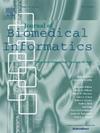Early detection of subjective cognitive decline from self-reported symptoms: An interpretable attention-cost fusion approach
IF 4
2区 医学
Q2 COMPUTER SCIENCE, INTERDISCIPLINARY APPLICATIONS
引用次数: 0
Abstract
Background and Objective:
Subjective cognitive decline (SCD) refers to self-reported difficulties in concentration, memory, and decision-making. Since SCD is based on subjective experiences, no specific medical test can definitively confirm its presence, making early detection challenging. Thus, it is advantageous to develop an AI model to capitalize on self-reported health complications, personality traits, and sociodemographic factors for early detection of SCD.
Methods & Materials:
This research has proposed an AI-based framework for SCD detection using self-reported measures from the BRFSS 2021 dataset. A novel Weighted Fusion Selection (WFS) approach has been introduced, which combines multiple feature selection techniques to address class imbalance and identify relevant features associated with less frequent classes. The data set has shown a significant imbalance, with individuals at risk of SCD being 81.76% fewer than those not at risk. An Attention Cost Convolutional Neural Network (AC-CNN) has been developed to address this, integrating channel-wise attention mechanisms and cost-sensitive learning to enhance performance across imbalanced data.
Results:
The AC-CNN model has achieved a balance between specificity (77%) and sensitivity (81%), with an AUC-ROC of 0.87. This has represented an overall 24.8% improvement in handling class imbalance compared to prior studies. Additional testing on the NHIS 2022 dataset has shown that AC-CNN has maintained balanced performance, confirming its robust generalizability, while other models have remained unstable.
Conclusions:
Further, applying SHapley Additive exPlanations (SHAP) explainable techniques to the AC-CNN model has revealed how individual aspects of an individual’s health records, lifestyle, and demographics contribute to the prediction of SCD. For example, depression, low education, poor income, inadequate healthcare, and poor overall health have all been strongly linked to an increased risk of SCD.

从自我报告的症状中早期发现主观认知能力下降:一种可解释的注意-成本融合方法
背景与目的:主观认知衰退(SCD)是指自我报告的注意力、记忆和决策方面的困难。由于SCD基于主观经验,没有特定的医学测试可以明确确认其存在,因此早期发现具有挑战性。因此,开发一个人工智能模型来利用自我报告的健康并发症、人格特征和社会人口因素来早期发现SCD是有利的。方法和材料:本研究提出了一个基于人工智能的SCD检测框架,该框架使用BRFSS 2021数据集的自我报告测量。提出了一种新的加权融合选择(WFS)方法,该方法结合了多种特征选择技术来解决类别不平衡问题,并识别与频率较低的类别相关的相关特征。数据集显示出明显的不平衡,SCD风险个体比无风险个体少81.76%。注意力成本卷积神经网络(Attention Cost Convolutional Neural Network, AC-CNN)已经被开发来解决这个问题,它集成了通道智能注意力机制和成本敏感学习,以提高跨不平衡数据的性能。结果:AC-CNN模型达到了特异性(77%)和敏感性(81%)的平衡,AUC-ROC为0.87。与之前的研究相比,这在处理阶级不平衡方面提高了24.8%。在NHIS 2022数据集上的额外测试表明,AC-CNN保持了平衡的性能,证实了其鲁棒泛化性,而其他模型仍然不稳定。结论:进一步,将SHapley加性解释(SHAP)可解释技术应用于AC-CNN模型,揭示了个体健康记录、生活方式和人口统计学的个体方面如何有助于预测SCD。例如,抑郁、受教育程度低、收入低、医疗保健不足以及整体健康状况不佳都与SCD风险增加密切相关。
本文章由计算机程序翻译,如有差异,请以英文原文为准。
求助全文
约1分钟内获得全文
求助全文
来源期刊

Journal of Biomedical Informatics
医学-计算机:跨学科应用
CiteScore
8.90
自引率
6.70%
发文量
243
审稿时长
32 days
期刊介绍:
The Journal of Biomedical Informatics reflects a commitment to high-quality original research papers, reviews, and commentaries in the area of biomedical informatics methodology. Although we publish articles motivated by applications in the biomedical sciences (for example, clinical medicine, health care, population health, and translational bioinformatics), the journal emphasizes reports of new methodologies and techniques that have general applicability and that form the basis for the evolving science of biomedical informatics. Articles on medical devices; evaluations of implemented systems (including clinical trials of information technologies); or papers that provide insight into a biological process, a specific disease, or treatment options would generally be more suitable for publication in other venues. Papers on applications of signal processing and image analysis are often more suitable for biomedical engineering journals or other informatics journals, although we do publish papers that emphasize the information management and knowledge representation/modeling issues that arise in the storage and use of biological signals and images. System descriptions are welcome if they illustrate and substantiate the underlying methodology that is the principal focus of the report and an effort is made to address the generalizability and/or range of application of that methodology. Note also that, given the international nature of JBI, papers that deal with specific languages other than English, or with country-specific health systems or approaches, are acceptable for JBI only if they offer generalizable lessons that are relevant to the broad JBI readership, regardless of their country, language, culture, or health system.
 求助内容:
求助内容: 应助结果提醒方式:
应助结果提醒方式:


